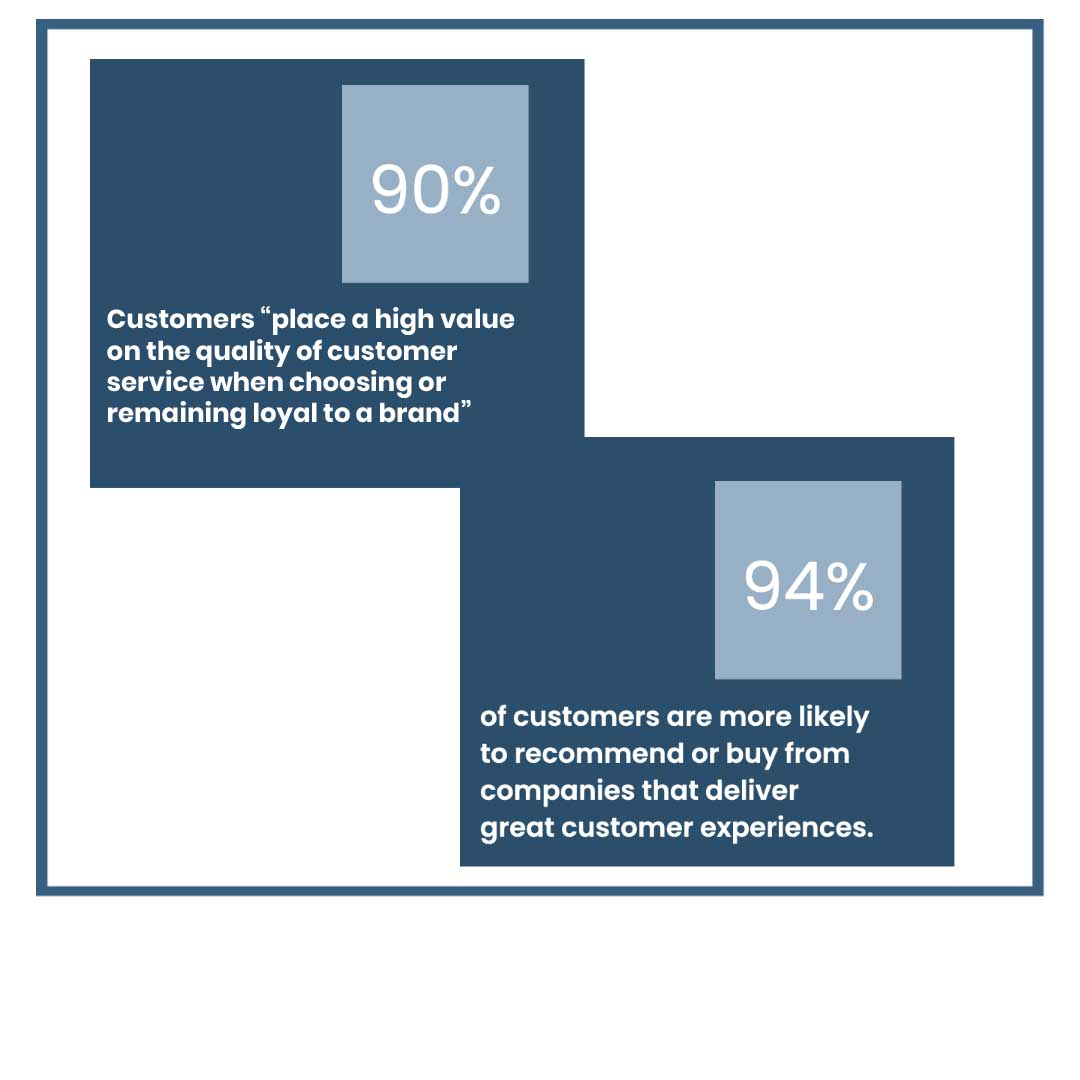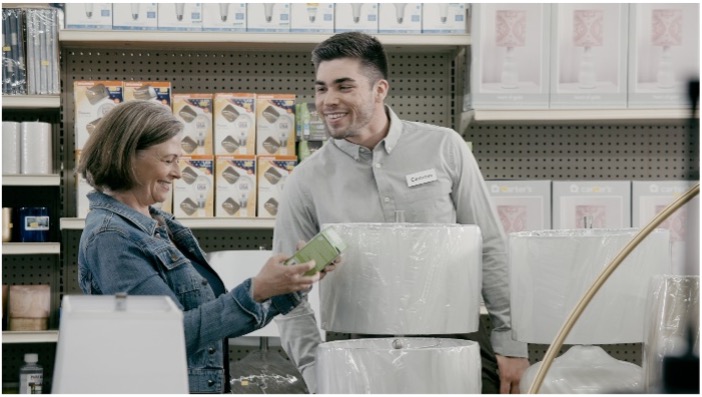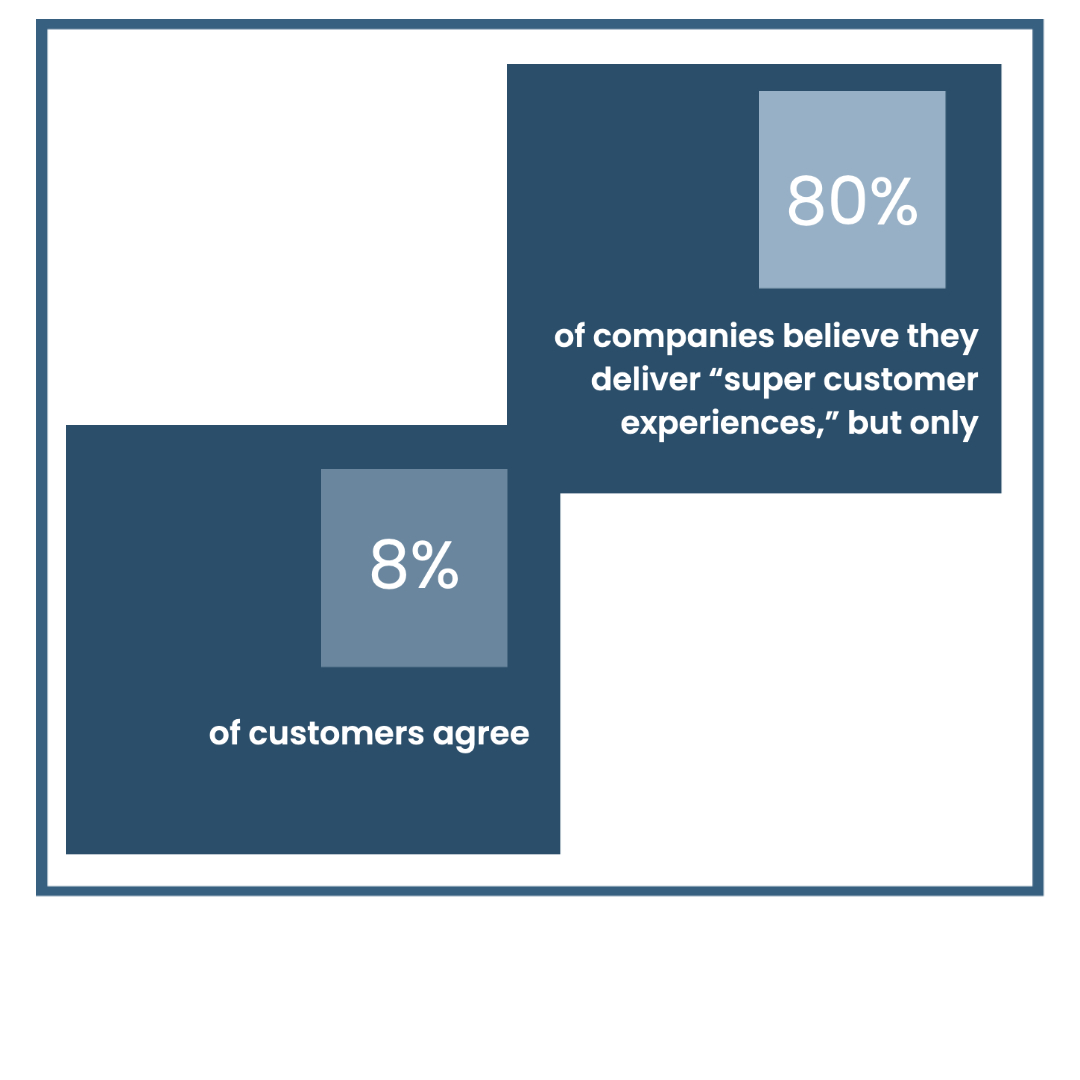To learn more about our Customer Service Excellence Training programs, Click Here or contact us at 800-408-5657
For decades, providing excellent customer service has been considered a must-do for organizations if they are to compete effectively, drive bottom-line business results, fuel company growth, and achieve sustainable success.
But what does that mean, exactly? What is customer service?
When companies talk about customer service, they refer to the support and interactions they provide to customers before, while, and after those customers purchase goods or services. The objective is to make transactions easy and positive, leaving the customer feeling pleased with the organization and the buying experience.
Based on that description, some organizations use customer service and customer experience (CX) somewhat interchangeably. Both speak to the critically important relationship between companies and their customers. Both terms can apply to a single instance in which a specific customer need is addressed, or they can more broadly encompass an organization’s ongoing relationship with the customer – including all of the interactions that take place to shape the customer’s perception of the company.


Global State of Customer Service - Microsoft 1
ROI of Customer Service Experience - Study2
How Companies Gauge Customer Satisfaction
Understanding customer service goes beyond a definition of the term itself. Organizations invest significant time and effort to determine whether or not they are consistently satisfying customers – a key element in establishing and nurturing the long-term customer relationships that bring repeat business.
Customer satisfaction (sometimes abbreviated as CSAT) is the term used to describe a customer’s level of happiness with—and perception of the quality and value of—an organization’s services, products, or the overall customer experience.
Data that captures levels of customer satisfaction provides important insights about companies and how they are succeeding (or not succeeding) in their efforts to delight customers. Organizations may track customer satisfaction in multiple ways:

Customer satisfaction surveys
These surverys ask customers to rate organizations across a variety of factors, such as the quality of products or services, whether expectations of the customer experience were met, product use, and more. Surveys also enable companies to solicit write-in remarks about the customer experience or to seek demographic and buying information about customers.

The net promoter score, or NPS
This is one of the most widely used measures of the success of customer service. It asks individuals to rate how likely they are to recommend an organization to others.

Tracking numbers of complaints
This provides additional information about customers’ satisfaction with services, products, or other aspects of the customer experience. Lower numbers of complaints indicate greater satisfaction on the part of customers.
![]()
Customer effort scores
Customer effort scores gauge how challenging it was for customers to get issues resolved. Lower scores signify lower levels of difficulty addressing problems, thus indicating higher levels of customer satisfaction.
![]()
Social media acitivity
Social media activity is monitored by many organizations as a means of assessing customer satisfaction, as well as gaining valuable input into overall perceptions about companies and brands.
What is Customer Loyalty?
Other concepts figure into gaining a full picture of an organization’s success at pleasing the people who consume its products and services:
- Customer loyalty is the result of a company’s ability to establish healthy, long-term relationships with its customers. Loyalty might be considered the outcome organizations achieve when they consistently please customers and inspire those individuals to make commitments to do business with the firm repetitively.

Sometimes, customer loyalty is used synonymously with customer retention. Actually, loyalty describes the result of an excellent customer relationship from the customer’s point of view (ongoing commitment to the company), while retention describes it for the company. In other words, an organization that provides a great customer experience is likely to earn the loyalty of its customers and be highly successful at retaining or keeping them.
- Customer loyalty programs are a popular strategy companies employ to cultivate successful long-term relationships with the consumers of their products and services. Customer relationship software firm Salesforce3 defines a customer loyalty program as “a marketing approach that recognizes and rewards customers who purchase or engage with a brand on a recurring basis.”
There are many ways to design an effective customer loyalty program, and they vary across industries, regions, and companies. Some examples include awarding of loyalty points, free merchandise, coupons, and early access to sales or new products. Salesforce says that more than 60% of marketers use loyalty programs, and it projects significant growth in the practice in coming years. Loyalty programs are used to drive customer retention and referrals, and may help companies gain useful information through customer reviews and online posts.
What Is Service Recovery?
Service recovery refers to a company’s ability to turn a dissatisfied customer into a loyal one by taking actions to respond effectively when a customer has experienced poor service. The service recovery paradox is the term used when a company succeeds so well at service recovery that it leaves the customer with a more positive perception of the organization than they had before the problem occurred.
Service recovery typically involves a company apologizing to the customer for the issue causing their dissatisfaction, taking ownership of the situation and solving the problem, then providing the customer with something extra and following up to confirm satisfaction.
One often-cited illustration4 of service recovery involves online retailer Zappos: When a groom-to-be ordered shoes from the company for his wedding, the order was shipped to the wrong address, making it impossible for the shoes to arrive in time for the wedding. The customer called Zappos, and the company responded by refunding his purchase price, then overnighted a new pair of shoes at no charge, and upgraded his account to VIP status. The actions resulted in a delighted customer who pledged his lasting loyalty to Zappos.
Training that helps employees manage situations involving disappointed or angry customers is crucial to the company's service recovery efforts. Here's an example:
Sign up to see a full preview of The Right Words at the Right Time training video here.


The Customer Service Experience Is The New Brand - Forbes5
While providing the best possible customer service is important, many companies struggle to get it right.
Forbes5 notes that “89% of companies6 compete primarily on the basis of customer experience – up from just 36% in 2010. But while 80% of companies believe they deliver ‘super experiences,’ only 8%7 of customers agree.”
Microsoft8 found that 58% of consumers say that poor customer service will cause them to stop doing business with an organization; 35% cite lack of knowledge on the part of a customer service agent as the most frustrating aspect of poor customer service experiences.
Research by Media Partners revealed additional challenges organizations encounter in delivering excellent customer service, including:
- Providing customer service training that engages and inspires employees
- Delivering training across onsite/remote/hybrid work models
The incredible discrepancy in perceptions about the customer experience, the frustration caused by lack of customer service employee knowledge, and issues encountered in training underscore just how urgent it is for organizations to devote significant attention to the employees who work on customer service teams. Especially important is prioritizing customer service training that engages, motivates, and inspires employees to delight customers with extraordinary experiences at every point of contact.
Elements of Effective Customer Service Training
 When Media Partners surveyed talent leaders about training required to help their customer service teams deliver outstanding customer experiences, several key ideas stood out. The greatest proportion of respondents (59%) wanted to provide training that could be easily recalled when needed by employees. Almost as many (54%) said it was critical that their organizations’ training helped customer service employees find purpose in what they do.
When Media Partners surveyed talent leaders about training required to help their customer service teams deliver outstanding customer experiences, several key ideas stood out. The greatest proportion of respondents (59%) wanted to provide training that could be easily recalled when needed by employees. Almost as many (54%) said it was critical that their organizations’ training helped customer service employees find purpose in what they do.
Customer service training programs from Media Partners cover the crucial elements that teach employees how to deliver amazing customer experiences while also addressing the concerns revealed by customer service research:
- Behavior-based training conveys the importance of the customer service role, providing the insights employees need to find and embrace the meaning in their work.
- Content instills the array of skills customer service teams require to communicate effectively and empathetically with consumers.
- Training emphasizes easy-to-recall service skills that enable employees to build the positive and lasting relationships that drive customer loyalty and retention.
- Engaging and memorable “viral” service excellence stories inspire next-level service behaviors by showing how to turn ordinary transactions into extraordinary experiences.
- Reinforcing the purpose that underlies customer service, while also building a culture of service excellence, effective training unifies employees and managers in their mission to take status quo service to shareworthy service.
To enable organizations to deliver training effectively across onsite, remote, and hybrid work models, customer service training must be available in formats that satisfy both in-person and virtual training needs. Content from Media Partners satisfies those design and delivery requirements with interactive eLearning that makes training memorable, fun, motivating, and convenient in any setting. Preview our Fill the Glass: Turning the Ordinary to Extraordinary course.
Examples of Customer Service Excellence
 To see examples of customer service excellence—preview Media Partners’ award-winning customer service training program.
To see examples of customer service excellence—preview Media Partners’ award-winning customer service training program.
1https://clouddamcdnprodep.azureedge.net/gdc/gdcPiLLQw/original?ocid=mkto_eml_EM582302A1LA1
2https://success.qualtrics.com/rs/542-FMF-412/images/ROI%20of%20customer%20experience%202020.pdf
3https://www.salesforce.com/blog/customer-loyalty-program-examples-tips/
4https://blog.hubspot.com/service/service-recovery
6http://blogs.gartner.com/jake-sorofman/gartner-surveys-confirm-customer-experience-new-battlefield/
7http://www.bain.com/bainweb/pdfs/cms/hotTopics/closingdeliverygap.pdf
8https://clouddamcdnprodep.azureedge.net/gdc/gdcPiLLQw/original?ocid=mkto_eml_EM582302A1LA1





